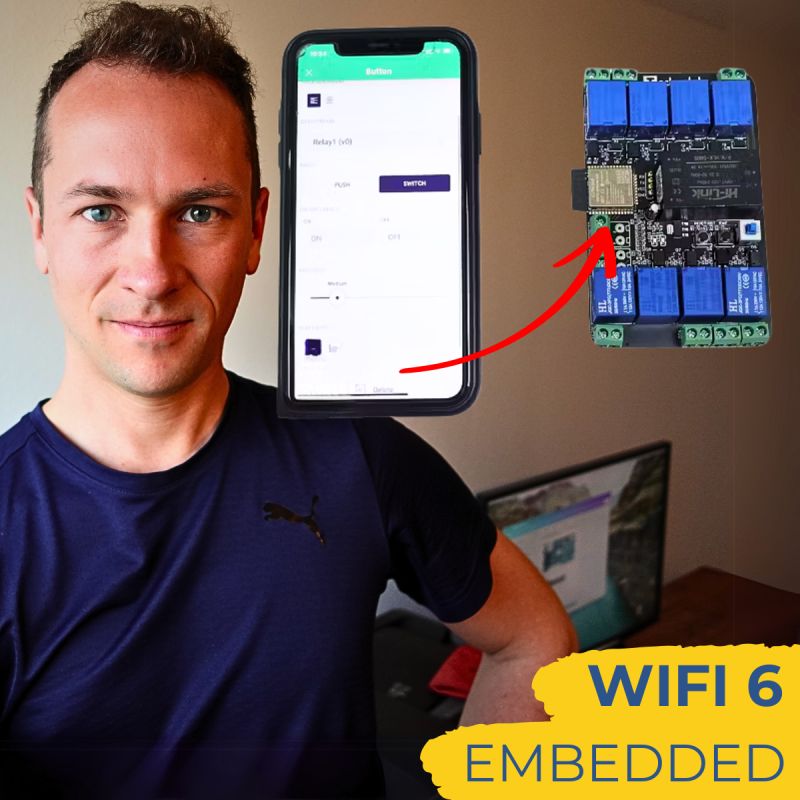Blog
Ever noticed your Wi-Fi has two versions?

Ever noticed your Wi-Fi has two versions? Something like:
HomeNetwork
HomeNetwork_5G
Most people assume that the second one is a 5G cellular, but it’s not.
It’s Wi-Fi on the 5GHz band. Besides ensuring that your Netflix streams smoothly, it’s of great importance.
The 5GHz band offers more advantages that make it ideal for industrial and embedded systems. Here’s how:
– Less crowded = more reliable
The 5GHz band deals with less interference from things like microwaves, Bluetooth devices, or nearby networks. That means stronger, cleaner signals.
– Faster data speeds
Higher bandwidth makes it great for handling real-time dashboards, data syncing, or any application that needs quick, wireless updates.
– Shorter range, but more precise
5GHz doesn’t travel as far. That’s actually a benefit in controlled environments like labs, smart buildings, and factory floors. You get more speed, and less noise.
In the embedded systems I build, I often choose 5GHz Wi-Fi for:
– Secure local communication
– Real-time monitoring apps
– Fast, wire-free deployments
No cables. No lag. No hassle.
Interesting, isn’t it?
Did you know the difference between 5G and 5GHz?
#EmbeddedSystems
News and Blog
Discover our latest news, insights from around the world and industry happenings.
The iPod: A Pocket-Sized Revolution
Before smartphones ruled, there was one device that changed everything about music, and tech. Remember when the iPod changed everything?
What if the tech inside your everyday gadgets had personalities?
The crew quietly powering your smart world: 1. Wi-Fi Module The social butterfly. Always buzzing, connecting devices non-stop. When it...
Meet RS485
The Unsung Hero of Industrial Communication. It doesn’t trend on tech blogs. It won’t connect your smartwatch. And it surely...
How many Maybe Days do I have in my contract
That’s what a new hire once asked at a company. (I didn't know what 'Maybe Days' are.) Reading further, I...
Everything is Smartifiable
Fact about me: I can smartify anything. Give me any object, no matter how “dumb,” and I’ll turn it into...
I Build the Tech, You Build the Business
Ever wondered why I don’t sell products? Let me explain. I don't sell products because I don't have clients. My...
Perfect Code is Not a Perfect Product
I made a mistake for years, and didn't even realise it. I was obsessed with creating the best software out...
Guess What This Is?
It measures just 1.38 mm², slightly larger than a grain of rice. This is highly powerful and has impressive capabilities.
Drone Today and Drone 100 Years Ago
100 years ago, drones could barely stay in the air. Today, drones can: - Capture 4K cinematic videos - Dodge...
Bluetooth Embedded
Bluetooth isn’t just for headphones. It is quietly transforming the way machines communicate with one another. We use it every...
Hardware without software is just metal.
Software without hardware is just logic. Put them together and you get magic. ✨ - Drones that fly. - Cars…
Ever noticed your Wi-Fi has two versions?
Ever noticed your Wi-Fi has two versions? Something like: HomeNetwork HomeNetwork_5G Most people assume that the second one is a...
Subscribe To Our Newsletter
Stay informed with free updates on embedded systems, including the latest news, trends, and innovations. You can unsubscribe at any time. Your data is used only for the newsletter and won’t be shared. Read our privacy policy for details.